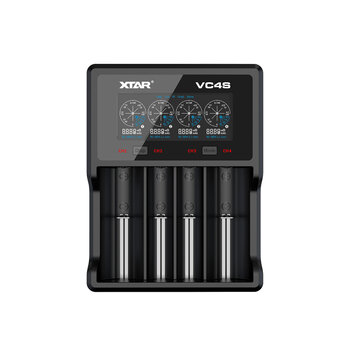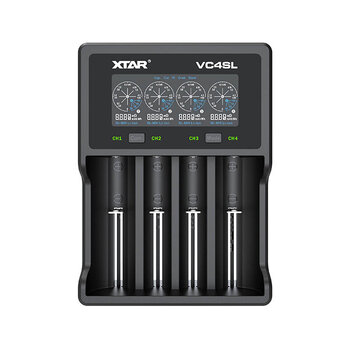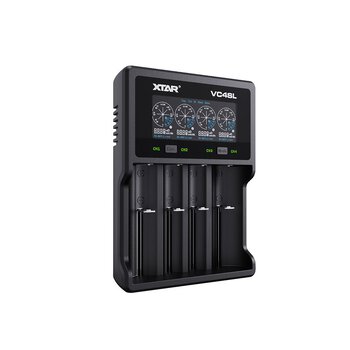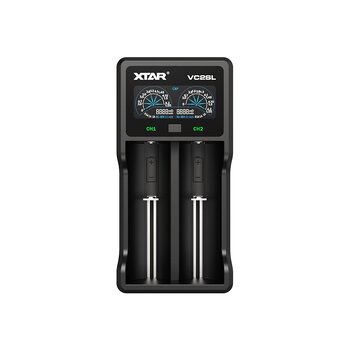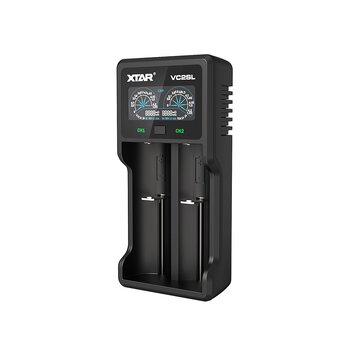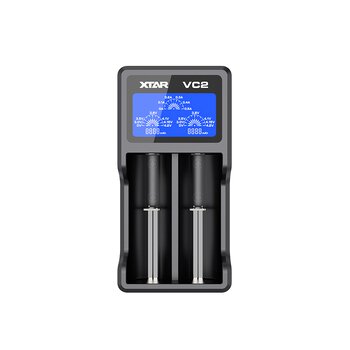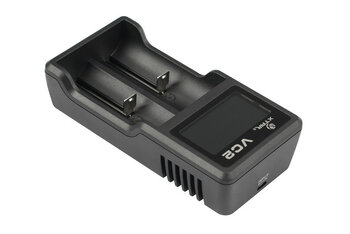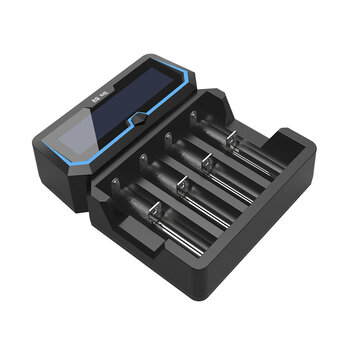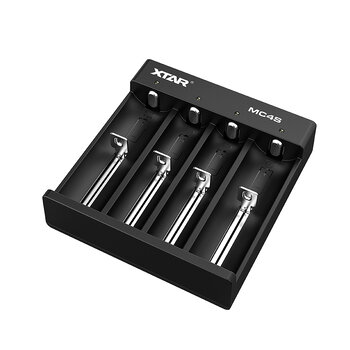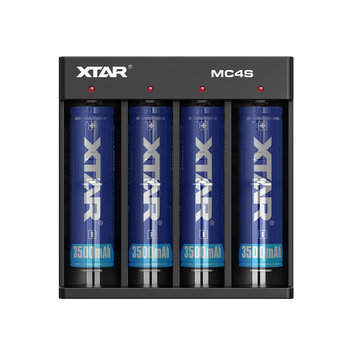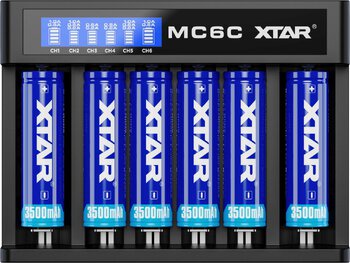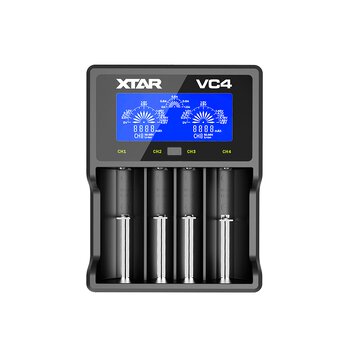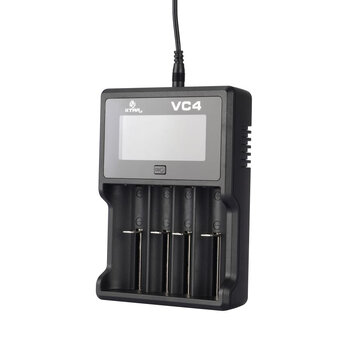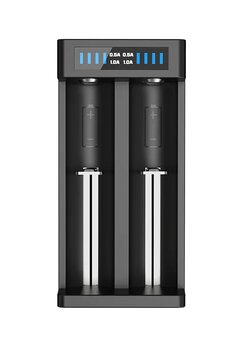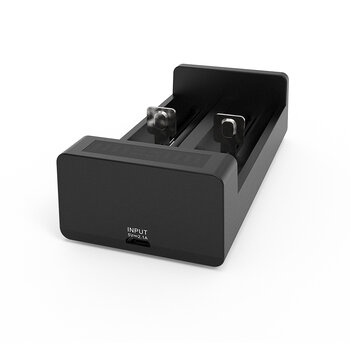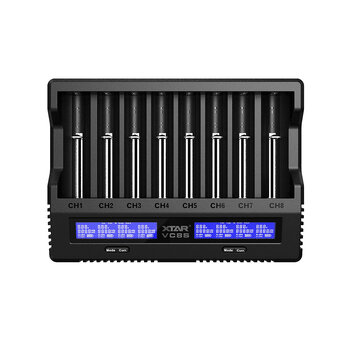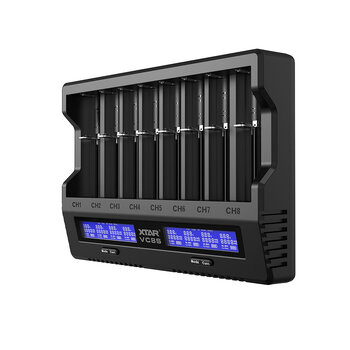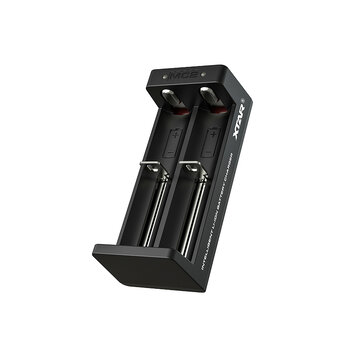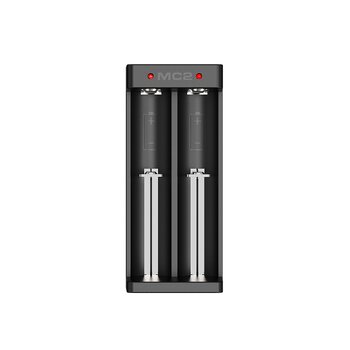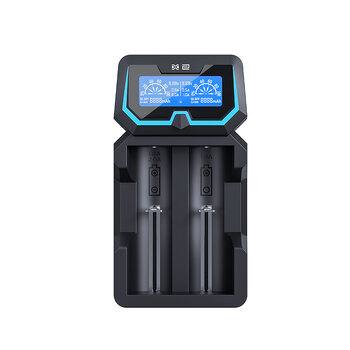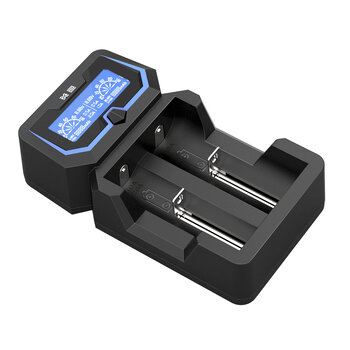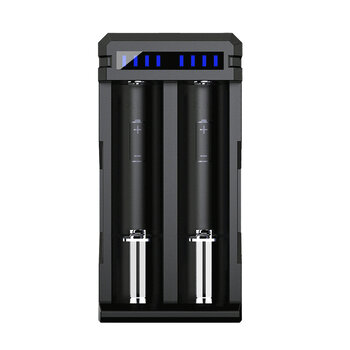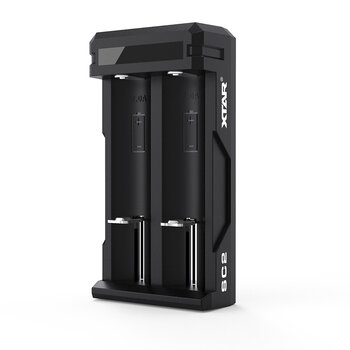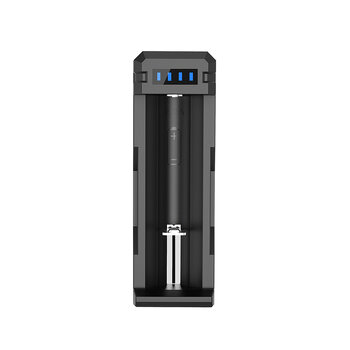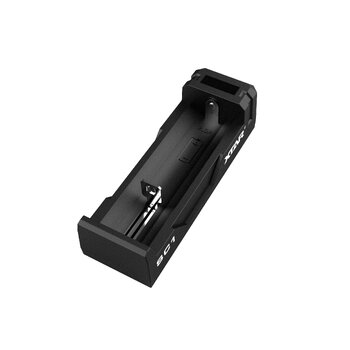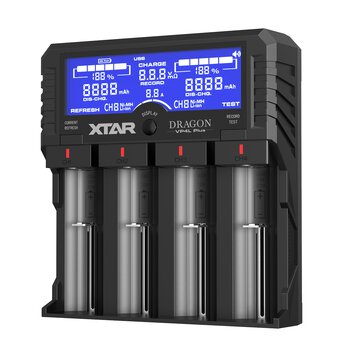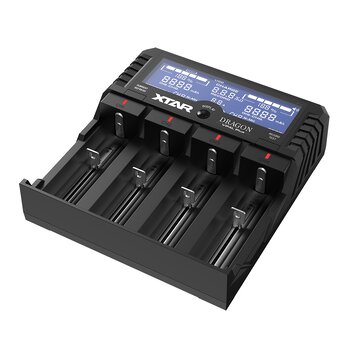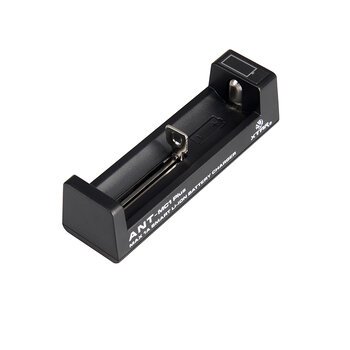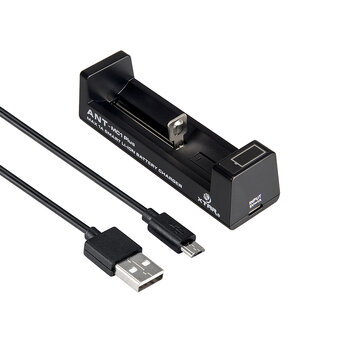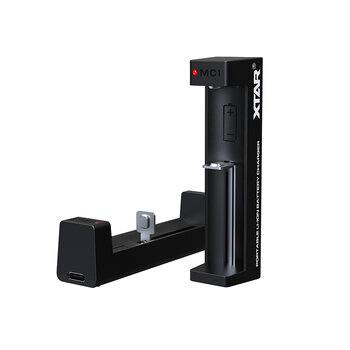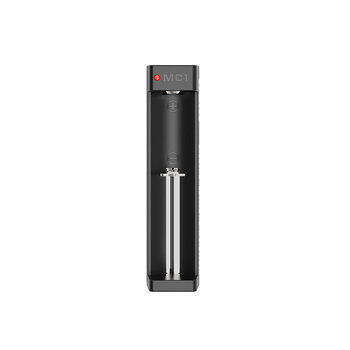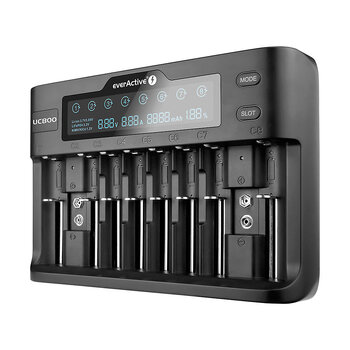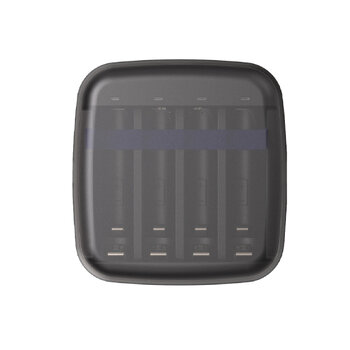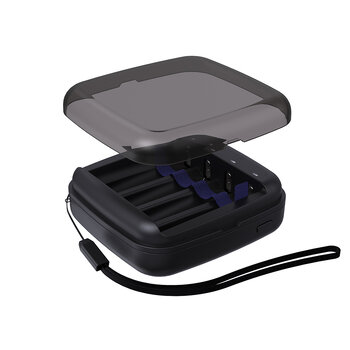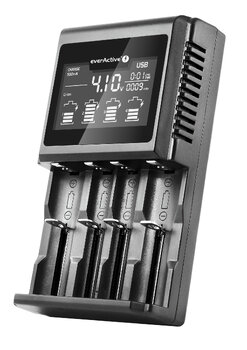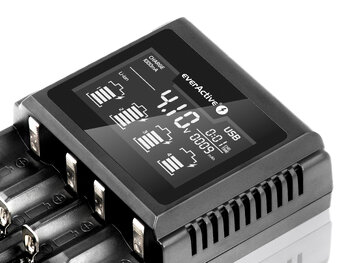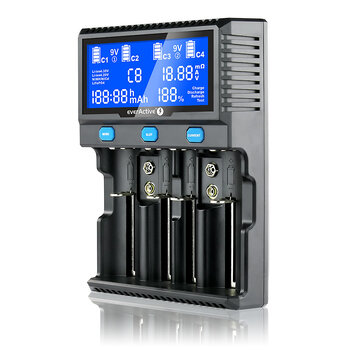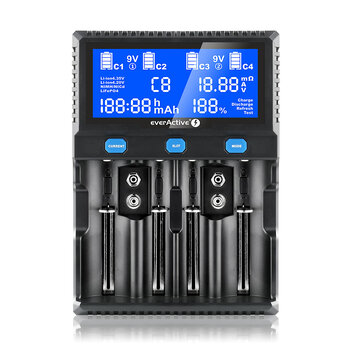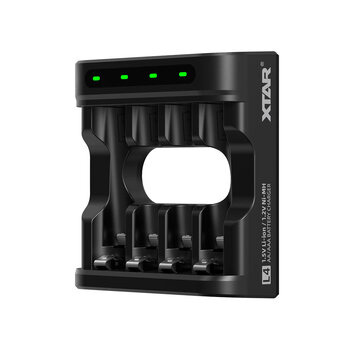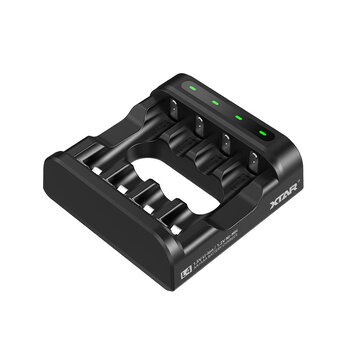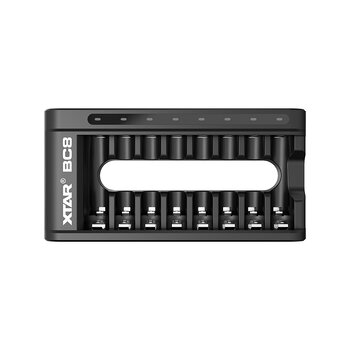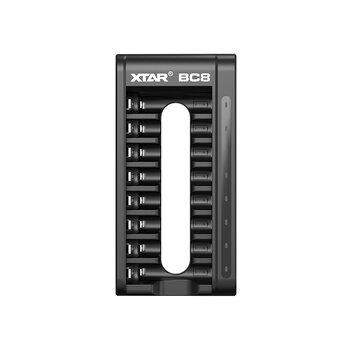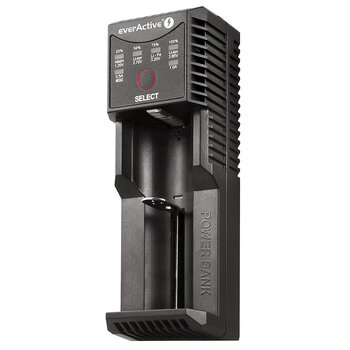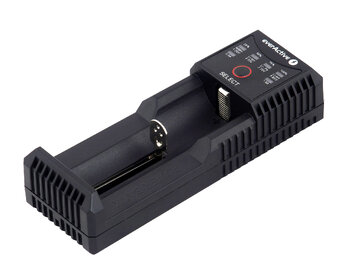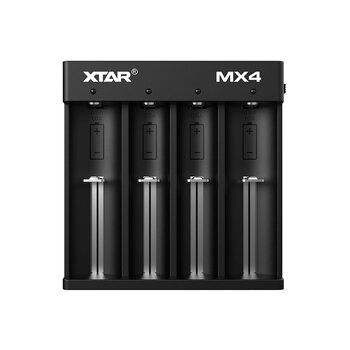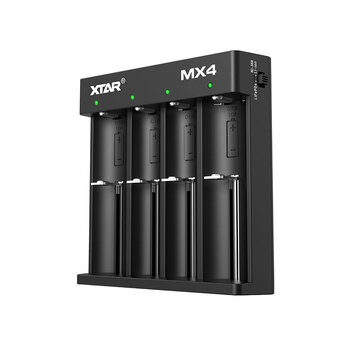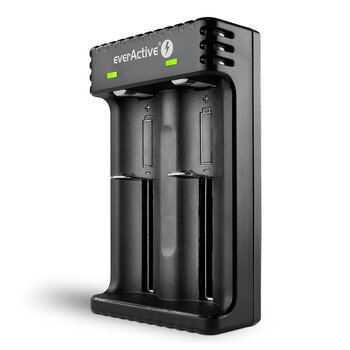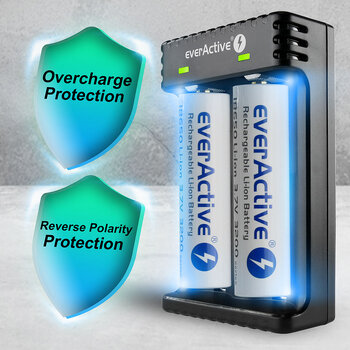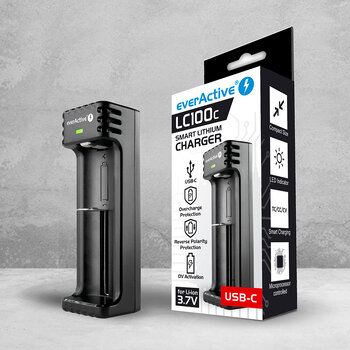Professional quad-channel processor charger VC4S is a professional processor loader with three-stage charging process TC/CC/CV and LCD display. It charges 1-4 Li-ion 3.6/3, 7V and Ni-MH cells with any capacity in the sizes AAA/R03, AA/R6, R14/C, 10440, 14500, 14650, 16340, 17500, 17670, 18350, 18500, 18650, 18700, 20700, 21700, 22650, 25500, 26650.
Xtar VC4S
Li-Ion and Ni-MH batteries in 18650, AA, AAA and other sizes
• Charging of Ni-MH rechargeable batteries by CC method
• Two independent charging channels
• Two charging currents-1x 3A/2x 2A/4x 1A
• VA LCD display for charging capacity, cell voltage, charging current and internal link resistance
• Powered by any QC 3.0-compliant charger
• Reactivation function of deeply discharged cells
• Protection: Short-circuit, thermal, reverse polarity
Illuminated VA LCD Charger display Xtar VC4S shows up to date information on the operating status of the charger: rechargeable batteries Expressed in mAh, battery voltage, charging current and internal resistance of the cell.
What Is THE TC/CC/CV charging method? It is a three-step process of loading Li-ion cells to keep the cell in good condition by charging the right current at each stage and completing the charging process at the right moment.
The various stages of the TC/CC/CV process are:
• TC phase: Cells discharged below 2, 9V are ' awake ' to lower currents.
• CC phase: When 2, 9V is reached, the cell is loaded with a constant current of 1A to 3A (depending on the power source being used).
• CV phase: When the cell is already nearly charged, the charger switches to a decreasing current charge until it reaches a voltage of 4, 2V on the cell. After reaching 4, 2V the charging process is complete-the battery is fully charged.
When left in the charger, the charged batteries will be subjected to a natural self-discharge process. Charging will resume when the battery voltage drops below 3.9 v.
The Xtar VC4S Charger has a function of reactivating deeply discharged cells and cells with a Voltage Of 0v. Many chargers on the market are not able to charge such batteries. Here with the help comes the charger Xtar VC4S, which in many cases allows you to ' resave ' such cells. Just insert a deeply discharged battery into the VC4S charger, as with normal charging, the charger detects the unloaded link and attempts to reactivate it. Attention! Cells unloaded below a certain level are irreversible and reactivated may not be possible. Avoid too deep discharge of Li-ion batteries-this can lead to a significant reduction in their durability and capacity or to their total malfunction.
Supplied with the Xtar VC4S charger, we get a micro USB cable and a pouch to help you transport the charger. The power supply is not Included In the set. To power the charger, you only need any charger with a USB port, (the recommended charger is compatible with the QC 3.0 standard).
1-2 Rechargeable Ni-MH 1.2 v Batteries
NiMH-controlled processor CC
Loading
Short Circuit
Before the battery is reversed
Input current
Micro USB cable, cover
- Li-ion batteries 3.6-3.7V, unprotected
- Li-ion batteries 3.6-3.7V, protected (with PCM/PCB)
- Ni-MH batteries
- 5V DC(3000 mA; Kabel micro USB w zestawie)
- Processor-controlled TC/CC/CV for Li-ion
- Processor-controlled CC with -ΔV/0ΔV/PVD for Ni-MH
- 0.25A / 0.5A / 1A / 2A / 3A
- 4.2V ±0.05V
- Reactivation of deeply discharged cells and 0V cells
- Before the charger overheats
- Against overload / short circuit
- Before reverse polarity of cells
- Charge
- Capacity measurement in mAh (Test)
- Measurement of internal resistance in mOhm (Quick test)
- Storage - charging for battery storage
- Working/Charging Status
- Charging
- Battery voltage
- Internal Resistance of the Cell
- VC4SL charger
- USB Type-C Cable
- Cover
- Li-ion batteries 3.6-3.7V, unprotected
- Li-ion batteries 3.6-3.7V, protected (with PCM/PCB)
- Ni-MH batteries
- 5V DC(3000 mA; Kabel micro USB w zestawie)
- Processor-controlled TC/CC/CV for Li-ion
- Processor-controlled CC with -ΔV/0ΔV/PVD for Ni-MH
- 0.25A / 0.5A / 1A / 2A / 3A
- 4.2V ±0.05V
- Reactivation of deeply discharged cells and 0V cells
- Before the charger overheats
- Against overload / short circuit
- Before reverse polarity of cells
- Charge
- Capacity measurement in mAh (Test)
- Measurement of internal resistance in mOhm (Quick test)
- Storage - charging for battery storage
- Working/Charging Status
- Charging
- Battery voltage
- Internal Resistance of the Cell
- VC4SL charger
- USB Type-C Cable
- Cover
5th Floor, No.77 Xinhe Rd, Shangmugu
518000 Shenzhen
Chiny
Email: info@xtar.cc
Telephone: (+86) 755-25507076
Geodetów 24
80-298 Gdańsk
Polska
Email: contact@baltrade.eu
Telephone: 58 552 20 20
